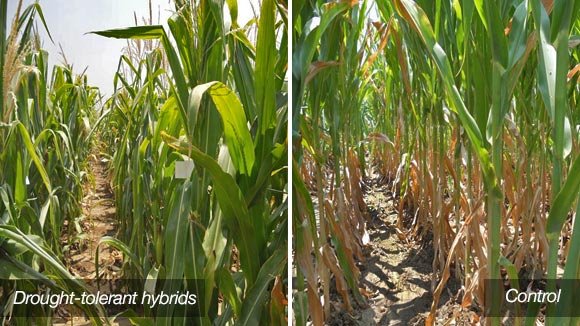How Asia Is Gaining Ground in Drought-Tolerant Corn

Dr. Mike Robinson, chief science advisor, Syngenta Foundation
In the last 15 years, farmers in South and South-East Asia have considerably increased the area on which they grow corn. Over 80% of their crop is rain-fed. Drought is a continuing threat. In Latin America and Africa, breeders have made good progress developing drought-tolerant corn, but Asia has so far lagged behind. A public-private partnership (PPP) spearheaded by the Syngenta Foundation for Sustainable Agriculture aims to improve the situation.
The partnership focuses on delivery to smallholders of what it calls “AAA Maize” – corn that is Affordable, Accessible and Asian. The public sector partners are the Mexico-based International Maize and Wheat Improvement Center, better known as CIMMYT, and cereal units of the national agricultural research services (NARS) in Vietnam and Indonesia. Private sector development expertise comes from Syngenta AG. “The partners’ main joint aim is to breed drought-tolerant CIMMYT germplasm into locally relevant maize varieties, and get these out to farmers,” says Dr. Ian Barker, head of agricultural partnerships at the Syngenta Foundation. Put another way: the PPP helps Asian smallholders to benefit from plant diversity by transferring technology already available to their counterparts in dry parts of Africa and Central America.
Low-cost, High Speed
 The partnership has already produced a series of special hybrids, says Dr. Mike Robinson, the Foundation’s chief science advisor. “They offer nearly all the yield benefits of classical hybrids, but at a fraction of the cost.” The PPP has moved very fast. “The first varieties should soon be available to farmers, after only six years’ work. R&D of this sort normally takes twice or three times as long.”
The partnership has already produced a series of special hybrids, says Dr. Mike Robinson, the Foundation’s chief science advisor. “They offer nearly all the yield benefits of classical hybrids, but at a fraction of the cost.” The PPP has moved very fast. “The first varieties should soon be available to farmers, after only six years’ work. R&D of this sort normally takes twice or three times as long.”
The key has been to combine the complementary strengths of public and private institutions. CIMMYT brings enormous germplasm diversity, for example, while Syngenta is strong on plant genotyping and marker-assisted breeding. Local NARS involvement ensures close ties to real-life growing conditions in areas of low rainfall.
From the start, it has been clear to all partners that the corn must be a public good, accessible to everybody. “Furthermore, Syngenta AG won’t be selling these varieties,” says Barker. “Small and medium-sized seed companies, mainly from India, will be the ones delivering the water-saving corn to smallholders.”
Experience with the cooperation so far suggests that this model can deliver excellent results. However, it is one of the very few formalized PPPs in crop breeding worldwide. “These partnerships aren’t springing up by themselves, so there’s clearly a need for brokerage,” Barker says. “As a non-profit organization, but with close connections to the private sector, the Syngenta Foundation is ideally placed to bring together public sector scientists and commercial enterprises in support of sustainable agriculture. We aim to catalyze more such arrangements in future.”





